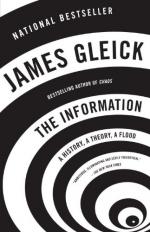
|
| Name: _________________________ | Period: ___________________ |
This quiz consists of 5 multiple choice and 5 short answer questions through Chapter 7.
Multiple Choice Questions
1. What type of lists did Babbage create about livestock, fabric, letter combinations in various languages and other facts?
(a) Statistical.
(b) Random.
(c) Numeric.
(d) Alphabetical.
2. There was no "looking up" of information prior to what invention?
(a) Pen and ink.
(b) Publishing houses.
(c) Printing machines.
(d) Writing.
3. Seventeenth numerical tables were set up so that what factor could be learned about each number?
(a) Pi.
(b) The square root.
(c) The logarithm.
(d) The base number.
4. Why did Lovelace publish her mathematical arguments anonymously?
(a) She didn't want to embarrass her father.
(b) Women were not expected to engage in scientific or academic efforts.
(c) She didn't want to appear more intelligent than Babbage.
(d) She wasn't sure her arguments were correct.
5. Why were there so many message errors with the early telegraph?
(a) Poor weather conditions.
(b) Passing the messages between too many operators.
(c) Political unrest.
(d) Untrained workers.
Short Answer Questions
1. What were the benefits of the early logarithm tables?
2. By 1930, what had replaced the telegraph as the most advanced means of communication?
3. Eliminating noise in Shannon's model meant looking at language in terms of what factor?
4. What culture was the first to use a written language?
5. Prior to the electric telegraph, an invention by the same name was created by Claude Chappe and his brothers during what conflict?
|
This section contains 248 words (approx. 1 page at 300 words per page) |

|




